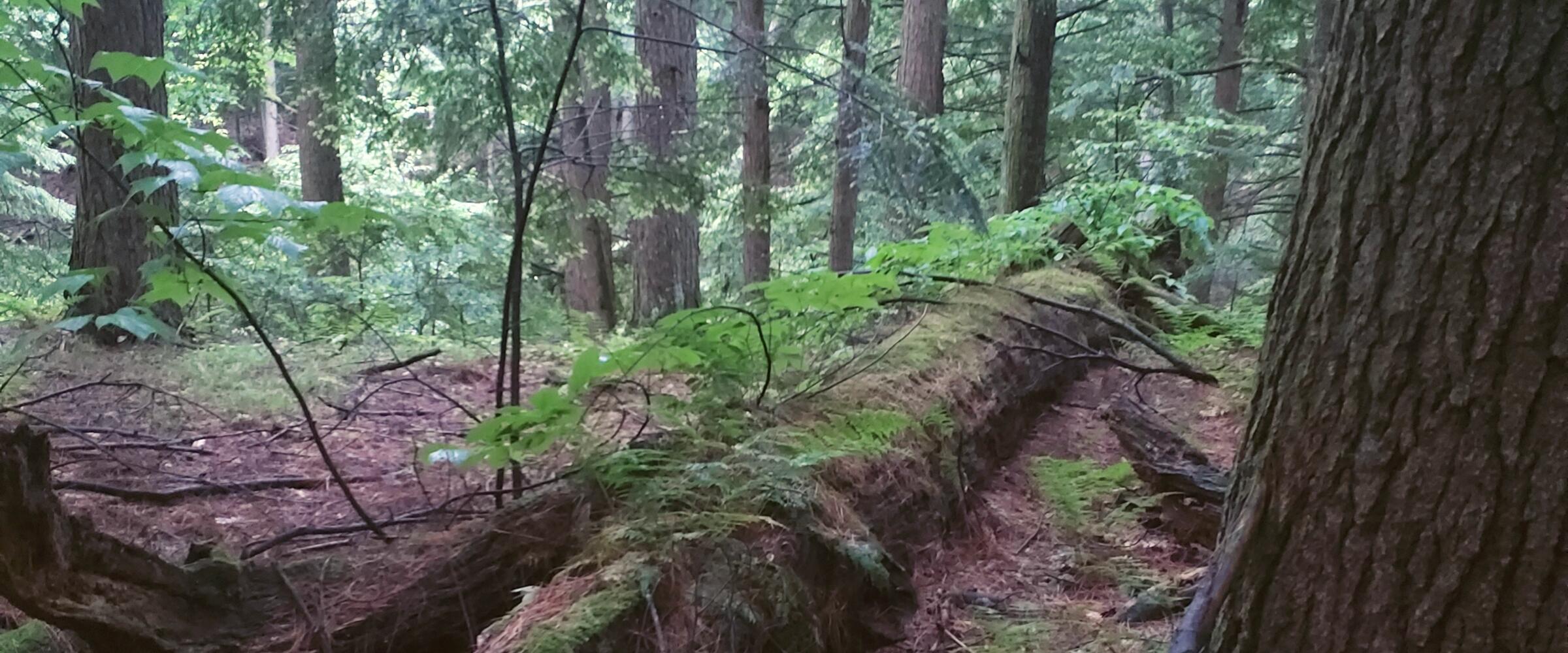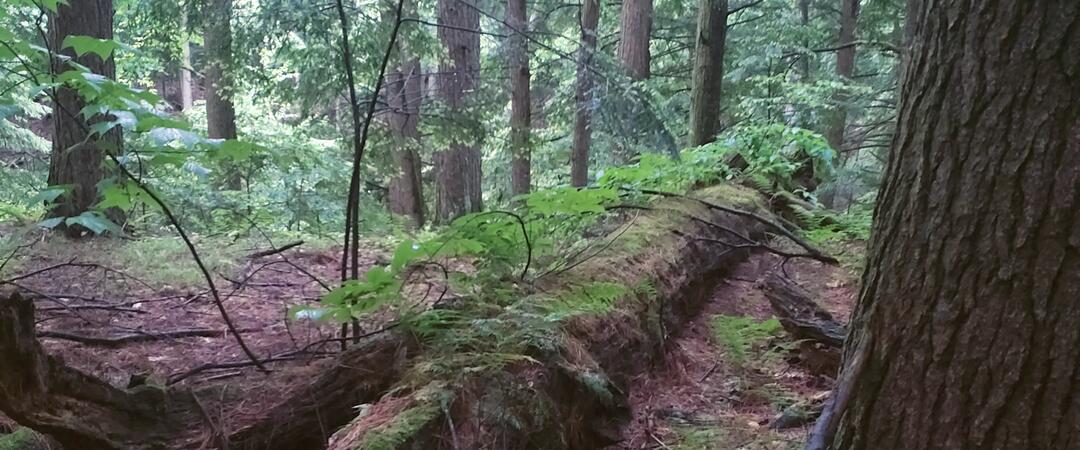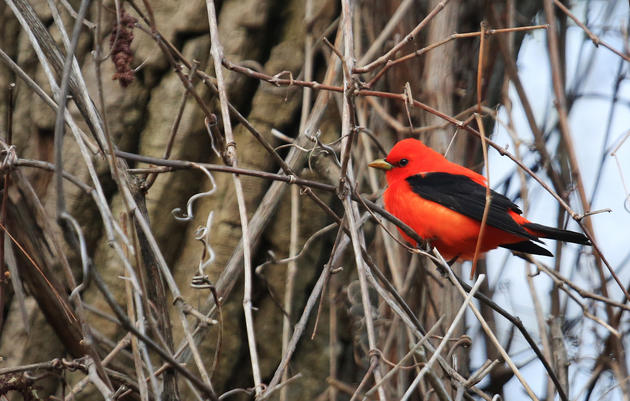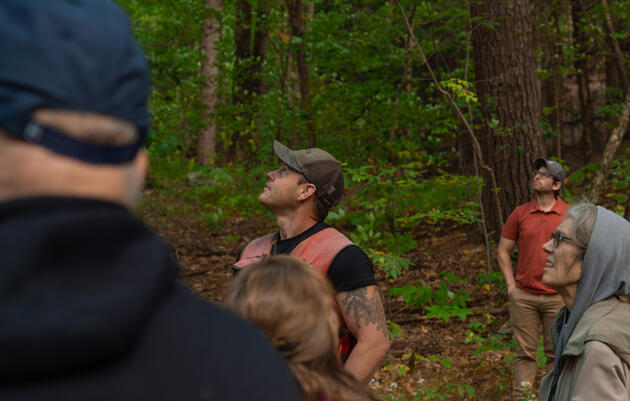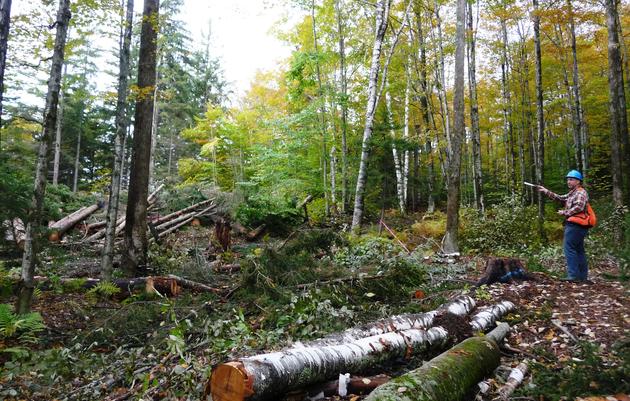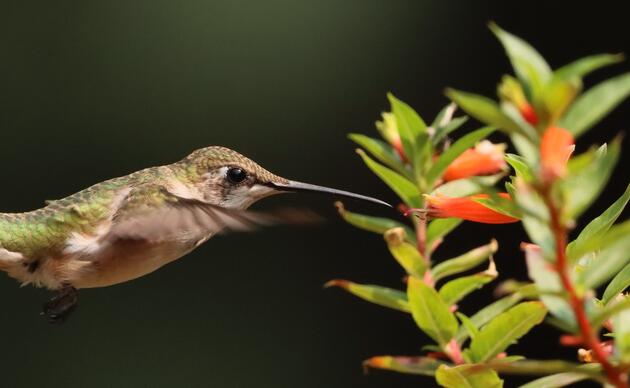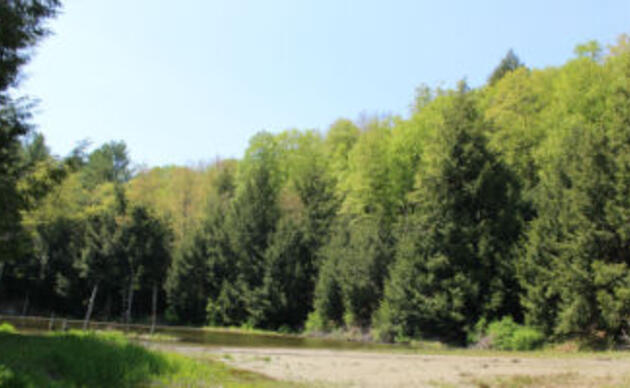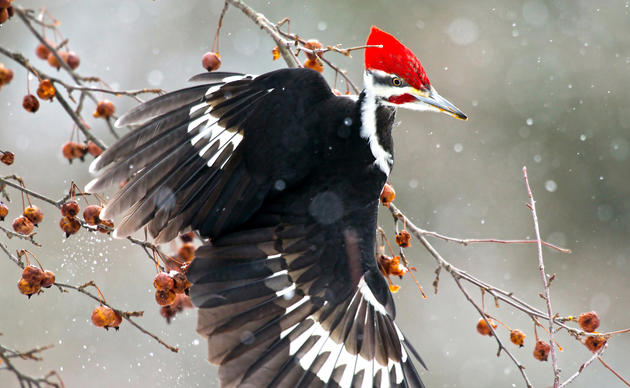Updated 10/15/2025
At Audubon Vermont, we work to protect birds and the places they need today and tomorrow. There is much work to be done in Vermont, given these forests are home to one of the richest breeding bird populations within North America. With approximately 76% percent of Vermont’s landscape currently forested, fulfillment of our mission can only happen through the complex and multi-faceted effort to protect, conserve, and manage Vermont’s forests across its many ownerships. To this end, Audubon’s staff ecologists and foresters, recognized experts in their fields, routinely collaborate with other natural resource entities to provide guidance on policy and resource management decisions. Our goal is to promote science-backed forest management practices that safeguard the health and longevity of our forest bird communities and ecosystems.
Accordingly, over the past two years, Audubon Vermont worked with partners to influence the United States Forest Service’s final decision on the Telephone Gap Integrated Resource Project (TGIRP) on the Green Mountain National Forest. The project has garnered significant public attention at both a regional and national level, attracting substantial input during public comment periods as part of the planning process. Partaking in this process, Audubon Vermont, the Vermont Natural Resources Council, and Dr. William Keeton of UVM collaborated to offer science-based guidance on how the Forest Service could modify their original proposed approach and implement a “triad” approach to manage these forests in ways to better protect old forests and conserve vital forest habitat conditions for birds, bolster the resiliency of the forest to climate change, and concurrently employ ecological forestry practices.
On December 3rd , 2024, the Forest Service released a final proposed decision on the TGIRP, proposing an alternative approach to forest management (called Alternative C) based in large part on our group’s comments. To ensure that old forests would be protected on the 35,489 acres in the project area, a minimum of 1,000 acres of state-designated significant old forests by the Vermont Fish and Wildlife Department would be set aside from harvesting. In addition, the Forest Service would set aside 661 additional acres of mature forest due to their substantial late-successional characteristics and employ a fine-filter measure that would require field inventories to identify and protect additional old-growth stands based on benchmarks and criteria specifically applicable to New England’s forests. Overall, 86 percent of the project area would continue to develop as late successional (mature and old) forest into the foreseeable future.
As part of the project, the Forest Service identified 7,743 acres for potential harvest treatment, including 4,112 acres for more conventional forestry, and 3,631 acres where, utilizing a more novel approach, ecological forestry principles would be implemented to retain and enhance mature and old forest conditions. This would include the creation of downed wood and snags, as well as opportunities to improve the structural complexity of the forests.
Although our collaborative was pleased with the decision, feedback and concern voiced from some members of the public surrounding the active harvesting of trees on the Telephone Gap project provided a valuable opportunity for a deeper discussion around the topic of forest management and old growth forest conservation in Vermont.
In March 2025, Audubon Vermont, Vermont Natural Resources Council, and Dr. Keeton submitted a final letter under the NEPA objection process, commending the Forest Service for the adoption of Alternative C, while simultaneously calling for further measures to protect forests and individual trees older than 150 years old. In response to this last round of advocacy, the Forest Service added additional protection measures for old forest protection.
In sum, this precedent setting approach on the Green Mountain National Forest includes:
- Inventory of Older Forests: All areas proposed for management with an age of origin of 150 years or greater will be re-examined to verify the predominant age of trees. Any stand predominantly over 150-year-old will be excluded from management and referred to the Vermont Agency of Natural Resources for potential old forest designation and protection.
- Protection of Individual Old Trees: During all timber harvests, any tree with a high probability of being 150 years or older will be retained and protected as a legacy tree.
- Re-inventory of Late-Seral, Mature Forests: Prior to any harvest, all stands classified as late-seral will be re-evaluated using USFS’s own timber inventory methods and assessed for old forest characteristics following current regional research (e.g., D’Amato & Catanzaro; Keeton et al 2018). Qualifying stands will be removed from harvest.
Together, these measures strengthen protections for old and more mature, late-seral forests in the Telephone Gap project area through the application of a “triad” approach.”
- Old Unmanaged Forests: Areas exhibiting high species and structural diversity, old forest characteristics, productive soils, and abundant snags will remain unmanaged.
- Light-touch Ecological Forestry: Forests on the cusp of developing old-growth characteristics will receive light touch practices designed to accelerate their development.
- Traditional-focused Forests: Forests far from old-forest conditions will undergo more traditional forestry treatments designed to meet diverse forest management goals, including the creation of young-forest habitat.
These commitments represent a significant step toward ensuring that the Telephone Gap project contributes meaningfully to Vermont’s legacy of resilient, bird-rich forests, and sets a precedent for collaboration and application of science through the management of our national forests. Below you can learn more about the Telephone Gap decision, including key aspects we view as especially significant —framed through Audubon’s commitment to conserving high-quality, connected, and climate-resilient bird habitat.
The Importance of Forest Management for Birds
Vermont’s forests play a vital role in supporting local and hemispheric bird populations. Species like the Wood Thrush, Black-throated Blue Warbler, and Scarlet Tanager depend on the complexity of healthy forests for nesting, foraging, and carrying out their full life cycle. These habitats are dynamic; they change over time due to natural processes that cause disturbance to the forests, like storms, pests, pathogens, and natural habitat engineers (like beavers) as well as human intervention. The complex forests that emerge broadly contain a diversity of tree species and other vegetation; multiple generations of these trees, many large-diameter trees, both live and dead (so called ‘snags’); and an abundance of dead trees on the forest floor. These are some of the conditions we typically think of when we envision the ideal old-growth forest.
Unfortunately, 19th-century Vermont experienced wide-scale deforestation as forests were cleared for agriculture and other uses. This period was followed by the widespread abandonment of these lands, allowing forests to begin to grow back anew, but with all measurable levels of diversity dramatically reduced.
Less than 0.5% of Vermont’s current forests truly escaped the 19th century untouched (and let’s call such rare remnant forests the true “old-growth” forests of Vermont). From an ecological point of view, Vermont’s forests, including those of the Telephone Gap area, are still underdeveloped and, on-average, generally lack the complexity that would otherwise be found in the functional old-growth forests that existed previously.
It takes centuries, if not millennia, of natural disturbances for forests to develop the rich complexity of a true old-growth forest. Yet, with declining bird populations, growing threats from climate change, and the need to leverage the capacity of our forests to sequester and store carbon- the need to gain this lost condition is urgent. Thankfully, we have tools to protect and conserve old-growth forests- from supporting passive management, often through designated natural areas and wilderness, to active approaches that can help restore this condition more rapidly through thoughtful, science-based forest management practices, that, yes, may involve the selective cutting of trees in the form of logging. Such activities can be prescribed in a way so as to accelerate the restoration of the missing complexity that birds and greater biodiversity need.
Furthermore, the complexity we're discussing here doesn't just relate to any single mature forest condition. We're also working to create a varied, connected network of different forest habitat types across the landscape. For example, young forest habitat, which many bird species rely on, is often lacking in areas where forests have aged uniformly without disturbance; some experts estimate that pre-colonial northern hardwood forest of the northeast US contained more young forest habitat than we see on the ground today. Sadly, the birds that specialize on young forests, like the Chestnut-sided Warbler and Mourning Warbler are currently experiencing some of the greatest population declines. By carefully planning selective harvesting and other management techniques, we can ensure that Vermont’s forested landscapes remain vibrant, diverse, and capable of sustaining both wildlife and human communities.
A Success Story in the Telephone Gap Decision
The Forest Service’s decision to adopt an alternative approach for the TGIRP marks a promising achievement in balancing ecological restoration with sustainable forest management. This new approach maintains protection of all state-mapped old forests known to exist in the project area. These forests have been verified on the ground by natural resource experts using the definitions and standards established by the VT Agency of Natural Resources’ (Vermont Dept. of Fish and Wildlife’s) Natural Heritage Inventory Program and Vermont Conservation Design. Furthermore, the decision goes even further and introduces new protective measures to identify and safeguard additional areas with substantial old-forest characteristics, utilizing scientific metrics and research developed for these forest types. The decision also shifts the management approach for a substantial amount of acreage of mature forests, which were previously slated for more intensive management, to climate-smart ecological forestry practices promising to accelerate the development of old-forest traits in areas where such conditions are currently lacking.
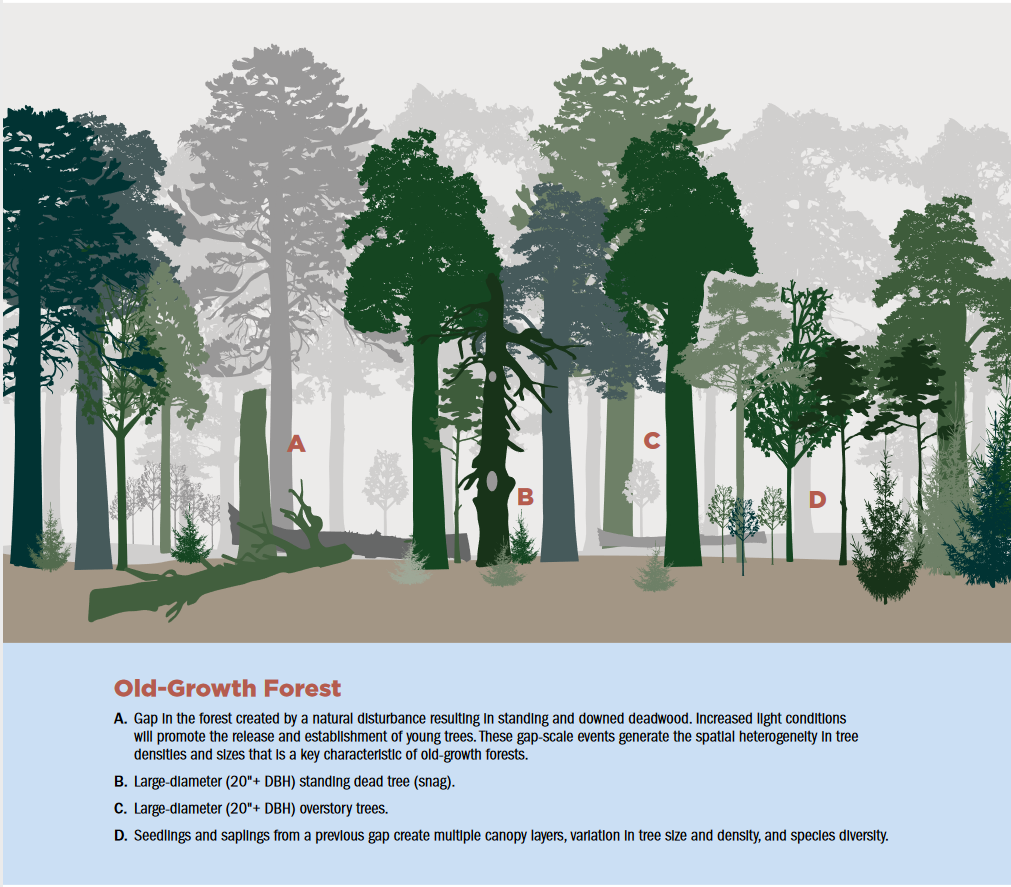
In fact, many of the proposed treatments under the new alternative align with Audubon Vermont's Silviculture with Birds in Mind practices, which emphasize promoting diverse forest conditions to benefit bird species and overall ecosystem health.
Additionally, the decision includes the creation of young forest habitat in degraded forest areas where biodiversity is currently low. Young forest is a rare yet vital habitat type in the project area and the scale of proposed young forest creation for this project is in line with Vermont Conservation Design's regional targets, further demonstrating a thoughtful and science-driven approach to management.
Overall, the new decision as to how the Forest Service will manage the forests of Telephone Gap represents a more rigorous, science-based strategy compared to its original proposal. It not only protects critical old forest conditions but also sets the stage for the future health and resilience of Vermont’s forests by addressing current deficits in biodiversity and ecological complexity. This decision sets a strong precedent for public land management in Vermont, highlighting how ecological forestry can advance complex forest structure and achieve sustainable management goals.
Furthermore, this approach- specifically the focus on applying science to conserve and restore mature and old forest within our National Forest system, would have been one of the first in the nation to meet the call of President Biden’s April 2022 Executive Order 17042, “Strengthening the Nation’s Forests, Communities, and Local Economies.
That Executive Order was rescinded, but the Telephone Gap decision remains a step forward in demonstrating how old forest conservation and ecologically focused management can work hand-in-hand to protect Vermont’s forests and the birds that depend on them. By protecting forest complexity where it exists and enhancing habitat diversity where it is missing, this project supports the ecological values we hold dear.
___________
Audubon Vermont remains committed to advocating for thoughtful forest management that benefits birds, wildlife, and people alike. We invite our members and supporters to join us in celebrating this success and to continue engaging in the important work of conserving and safeguarding the future integrity of Vermont’s forests, the birds that call these forests home, and our greater cultural and natural heritage.
To explore how Audubon Vermont is working to protect birds and their habitats, visit our website or follow us on social media. Together, we can ensure a future where birds thrive in healthy forests.

